1
Steph W. from SEOPressor


👋 Hey there! Would you like to try out this New AI-Powered App that'll...
...help you check your website and tell you exactly how to rank higher?


84
score %
SEO Score

Found us from search engine?
We rank high, you can too.
SEOPressor helps you to optimize your on-page SEO for higher & improved search ranking.
By vivian on September 30, 2019
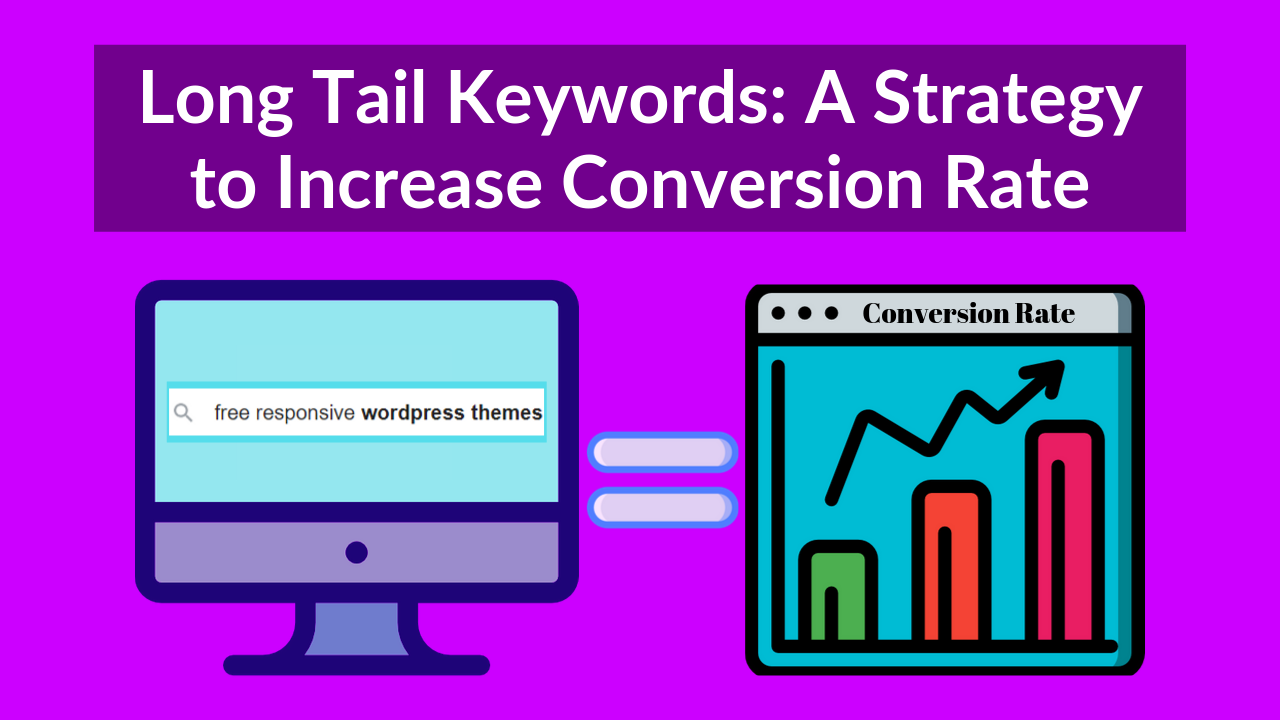
There are 9 SEO Keywords you need to know in order to convert. In this blog post, we will be focusing on one specific type of keyword from that blog post, namely, long tail keyword.
Here’s the sequence of the blog:
As the name implies, a long tail keyword is a search term that is long, typically consists of 3 or more words. They’re much more specific than head keywords. Head keywords are also known as short tail keywords. Here’s an illustration to help you understand better:
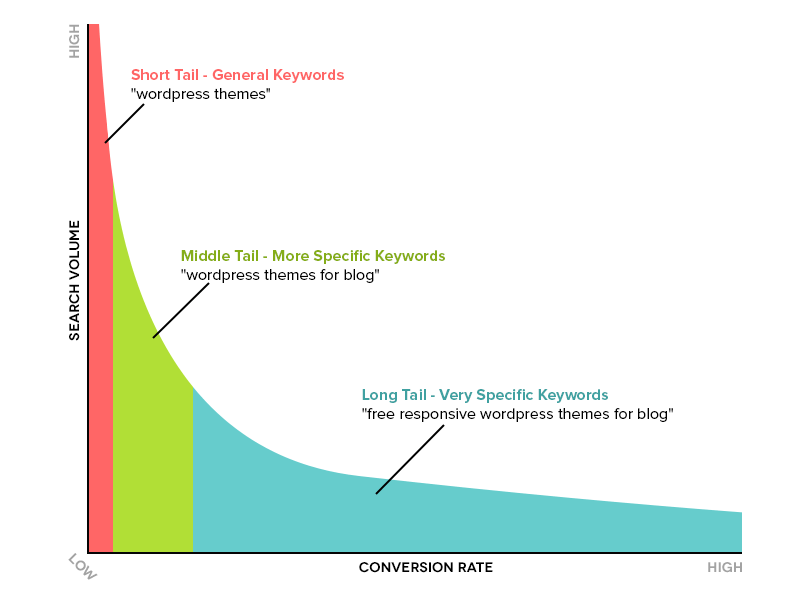
Short tail keyword example: wordpress theme
Long tail keyword example: free responsive wordpress themes for blog
Now that you know what it is, let’s move on to its characteristics and benefits.

From the image above, we can see the characteristics of a short tail keyword and a long tail keyword. Let’s look at the long tail keywords’ characteristics in detail today.
The search volume is significantly lower as compared to head keywords. People just tend to enter head keywords more, which allows them to discover new things related to the head keyword.
For instance, when they want to learn how to make a chocolate cake, instead of searching “how to make a chocolate cake” on Google, they will just search “chocolate cake“. Why? Because short tail keywords provide you with results that consist of long-tail keywords. Take a look at the search “chocolate cake”:

As you can see, they’re filled with recipes. For some queries, users’ intent can be answered using a short tail keyword. Hence, the search volume for long tail keywords is generally lower.
Competition for long tail keywords is low. When you have “original” specific keywords, there will be lesser businesses targeting the same keyword. If you’re just starting out or not a big player yet, it may be best to target keywords with lesser competition, which is long tail search phrases.
Below are some illustrations to justify the statement above, take note of the number of results:

The top search engine results for shoes contains about 7.9 billion results! Traffic for the query is definitely high. Hence, it’s not surprising that big brands like Zappos, DSW, and Nordstrom Rack are ranking for it. That’s some tough competition.
Now, what happens if we add “sports” in front of the keyword? The number of results decreases to 1.6 billion. 627 million results are gone, which means, 627 million competing websites gone (79.37%).


Now, let’s add another word infront, “blue”. Another 610 million results are removed. 87.09% of the results from the original search term “shoes” were removed.

I’m sure you all get the idea already. You may go on to add more words, but I’ll end my example with this one. There’s a whopping 7 billion decrease in results on the SERP.
To conclude, the longer your keyword, the lesser the competition.
Long tail keywords are more focused. Content writers use them to target people who know exactly what their wants are. Let’s take “mineral water” as an example.
For people who do not know what they want specifically, they will look up for “mineral water” in the search engine result pages. On the other hand, people who know will lookup for something like “Fiji Natural Artesian Water”.
From the example, it’s clear that long tail keywords are typed in by users who know what they really want. All businesses need to do is target the long tail keyword and actually provide what they offer.
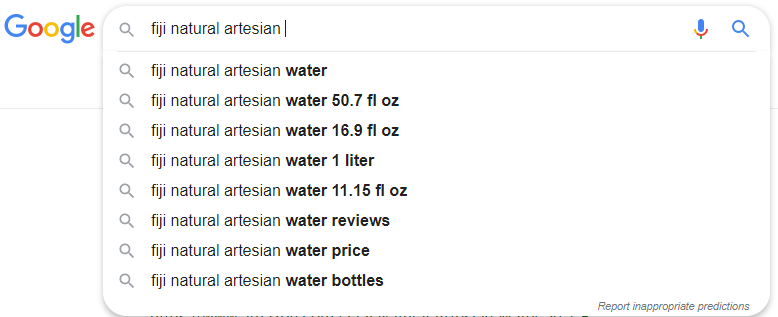
For those who want to take the easiest way to rank and gain maximum visibility, they need to pay Google Ads.
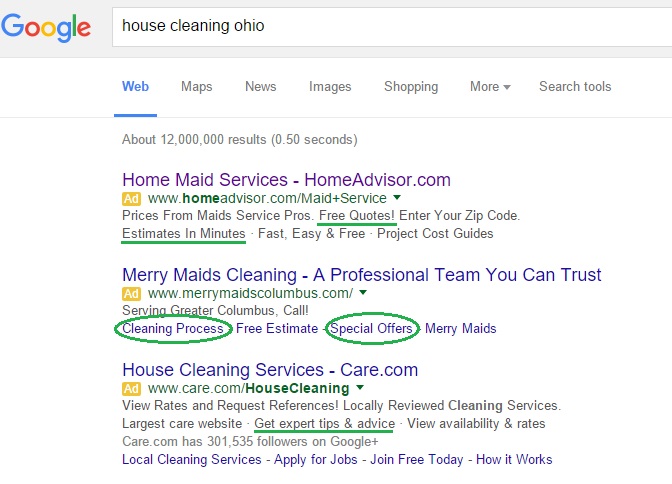
Just look at that, paying for an ad will get you on top of 12 million results. The good news is that Google AdWords has got a reduced price for searches that are specific and contain more terms, a.k.a long tail keywords.
Hence, the cost of long tail keyword is low.
Last but not least, the main point of this article: long tail keywords convert much better as compared to head keywords.
Why? Because competition is lower and they’re targeted. People who find you through long tail keywords are prepared to make a purchase, probably with their credit card in front of them.
Need justification? Here.
You want to buy a pointe shoe for your child, which keyword will most likely answer your search intent?
A. pointe shoe
B. pointe shoes with ribbon for toddler
You are more likely to make a purchase from one of the results “B” has generated. Unlike “A”, the results in “B” has exactly what you’re looking for.
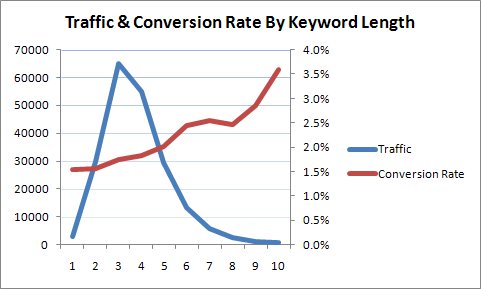
Now that you know the characteristics and benefits of long tail keywords, you must be very interested in knowing where you can find them. Right? Let’s move to that.
There are many ways we can find long tail keywords. Let me share with you 3 ways you can get long tail keywords.
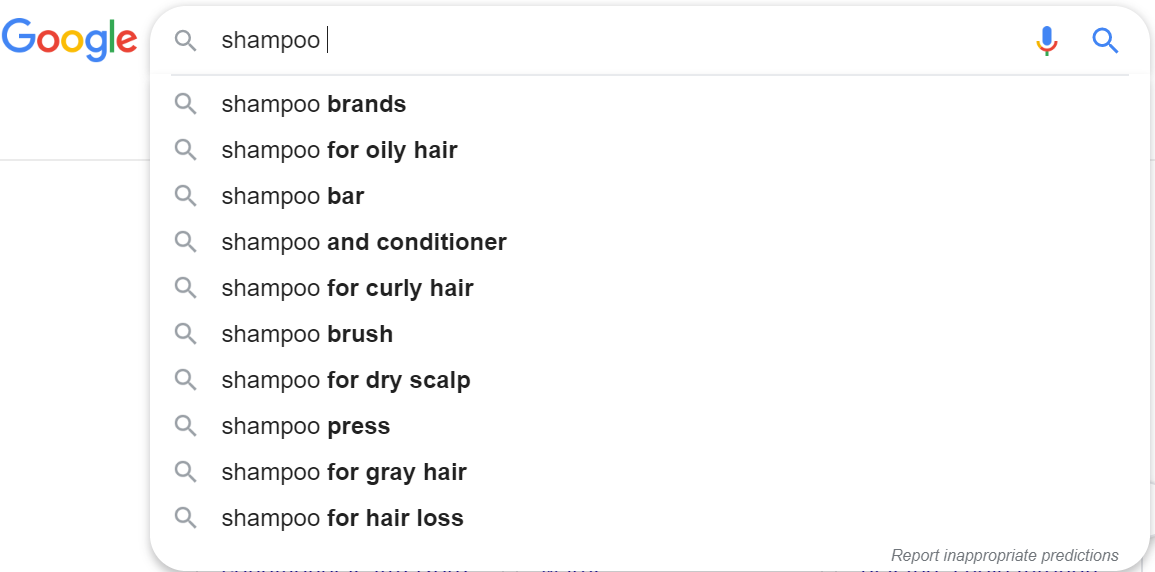
Google Autocomplete is a search feature on the search engine. It tries to predict your search query as you type in each letter.
Google determines these predictions by looking at real searches that happen on the search engine itself and then show common and trending searches relevant to the letters entered. Now, it makes sense to get long tail keywords from autocomplete as they are real searches.
To get a more accurate result, sign out of your account, use incognito mode and/or turn Web & App Activity off.
In the middle of the page, you will usually see the ‘People Also Ask’ column. This column contains a list of questions that people ask.
Don’t be deceived by its appearance. Clicking on a question will trigger more questions to come out.
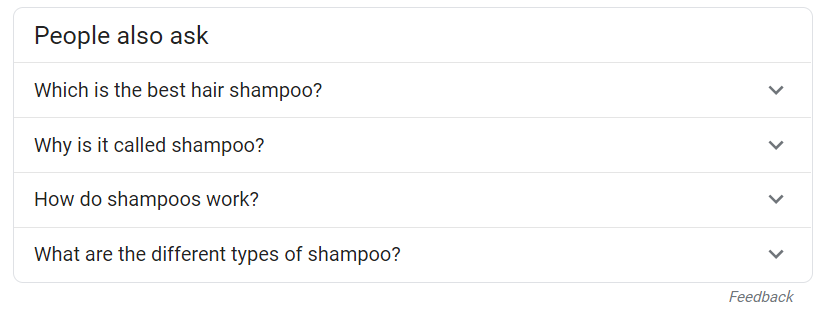
Now, ‘Searches Related to’ is what you will see at the end of the page.

It seems like they’re all related to real searches, which makes it a good place to look for the long tail keywords.
Enter your target keyword and choose the location and languages that you want.
Then, you will see a list of related keywords together with their useful metrics.

Proceed to click the ‘Advanced Filter’ button, and drag the pointer to ‘Long’.

Once you click the ‘Filter Keywords’ button, you will see only long-tail keywords in your keyword list.

Other than related keywords, you can also find content ideas, popular questions, and trending searches in Keyword Intelligence. Give them a try for free by creating your free account here.
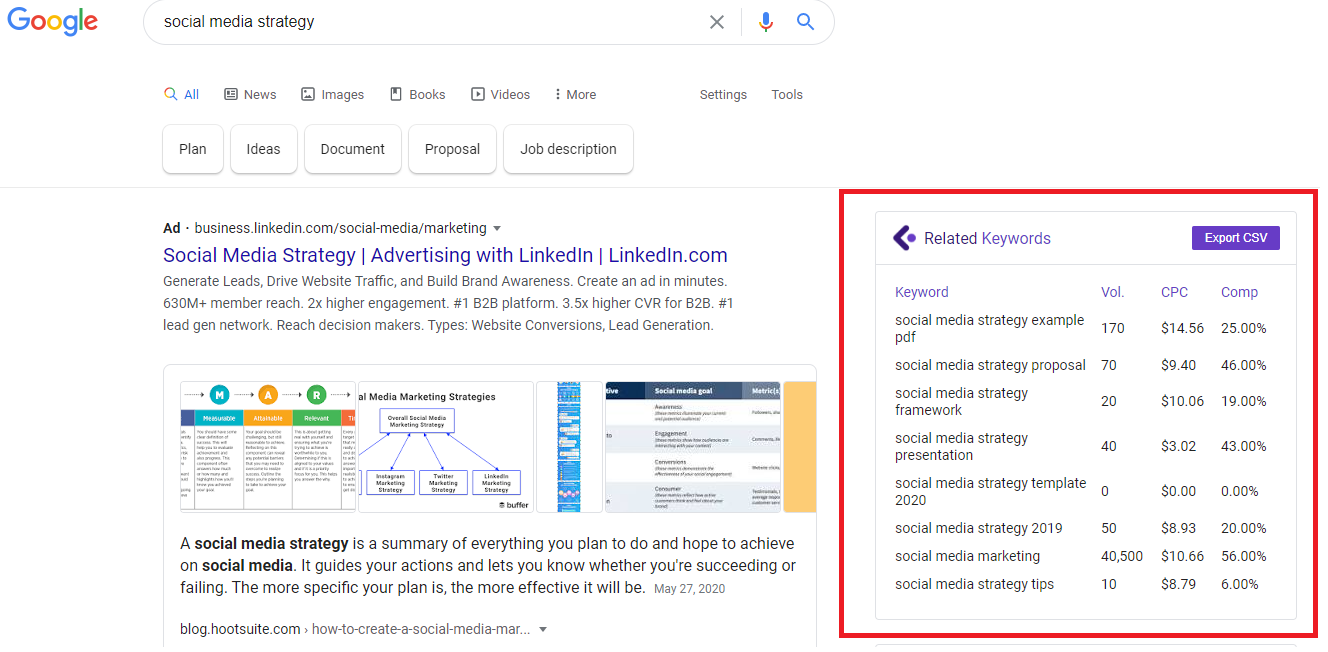
LiveKeyword is a FREE chrome extension that provides important keyword metrics for marketers like us.
Note: You can get free access to this extension once you sign up for BiQ!
Installing this extension will lead to obtaining useful keyword metrics right in the search results such as search volume, CPC, and competition. This is a work of art for those of you who’d like to get immediate results during your keyword research process.
As you can see in the image above, this sleek extension will come in 2 main sections: “Relevant Keywords” and “Related Searches”. Both sections provide accurate estimates on your search query faster than ever before!
Notable main features include:
✔️ Related Keywords – phrases that people often search for in addition to your main keyword
✔️ Related Searches – searches that are closely related to your main keyword
✔️ Keyword Data – make better keyword research decisions with accurate data
✔️ Export as CSV – download a huge list of keywords in one go
Interested to learn more about LiveKeyword? Get it here: https://biq.cloud/live-keyword

LSIGraph is a freemium LSI keyword generator. Simply type in your main keyword and you will be served with a list of semantically related keywords. The premium version will provide you with trends, search volume, LSV (proprietary formula) and more.
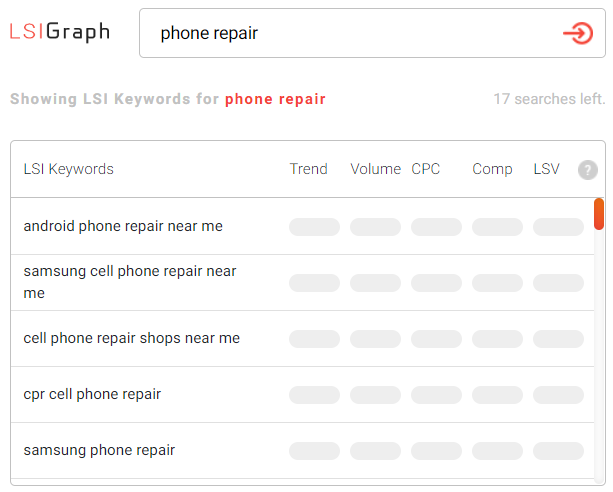
Quora is extremely helpful in giving long-tail keyword ideas. They’re also relevant. They are a Q&A platform, where real people ask real questions and get real answers.
Here’s an example of a search I did: I typed in “futsal”, it showed me questions people asked regarding the topic. Refer to the image below:

This platform is great because after all, we’re all writing with an attempt to answer the users’ queries.
Another great thing is that they’re full of opinions from different users. They’ll help you look at things in various perspective and you may even include points that you think is good.
Now that you know what a long tail keyword is, their characteristics and benefits and, how to find them, it’s time to learn how we can use them.
It’s best to include a few long tail keywords in your content, whenever applicable. Long tail keywords can be put anywhere, be it title, content, or headings.
It would be a good idea to include them in headings, which shows that you have a section just to address the users’ queries.
I have done just that in this blog post.
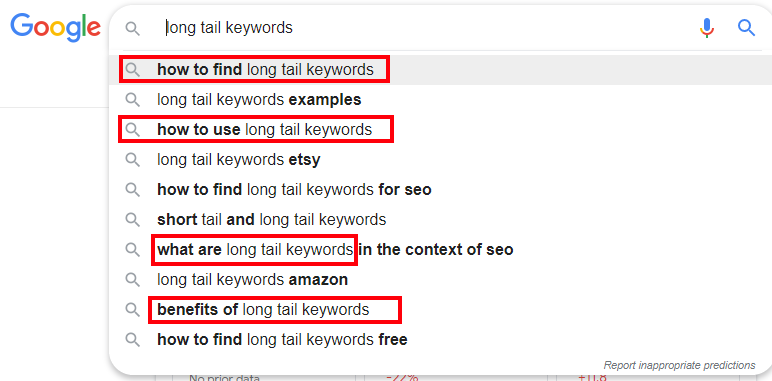
Also, it does increase your chance for a featured snippet as crawlers are able to read your content better, there is less competition, and your target keyword is very relevant to the user’s query.
Using the same keyword over and over again will result in you getting penalized by the search engine. To avoid that, you need to have a low keyword density. Use the search engine’s features and keyword research tool to get related long tail keywords that you can use besides the main keyword.
Long tail and short tail keywords are both great in their own ways. However, for small-medium businesses, a long tail keyword would be more favorable as it is easier to rank, cost lower, and generally have a higher conversion rate as compared to head keywords.
Get your long tail keyword now!
We would love to hear about your experience in this topic about long tail keyword – such as when you started using long tail keywords, how long it took to see results, results you’ve seen and what, if any, difficulties you might have encountered. So be sure to let us all know by leaving your thoughts in the comments below!
Updated: 17 April 2024

Gotcha.

Generate 5,000 words in under 5 minutes

Publish 100+ blog posts monthly

Rank in the Top 10 with SEO-optimized content

Drive 500K organic traffic
Rank in the Top 10 now with Longform AI
Save 67% today (As low as $14.69/mo)
